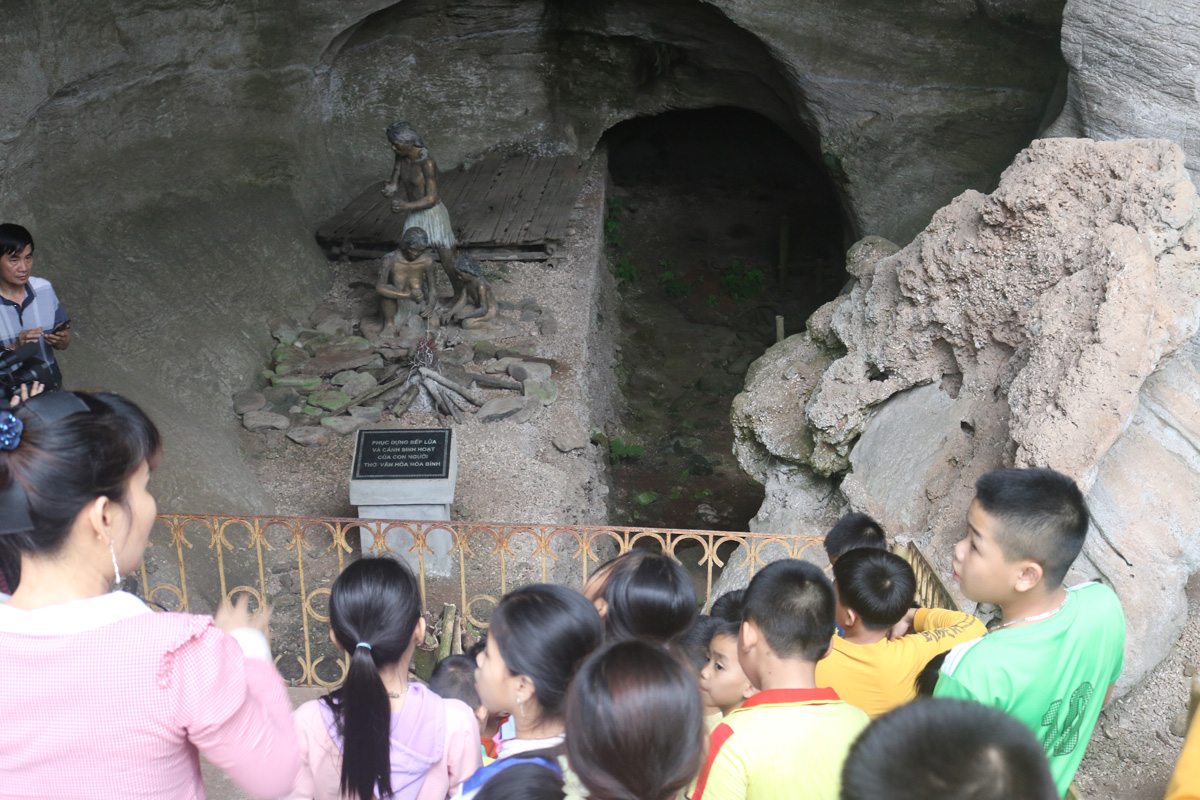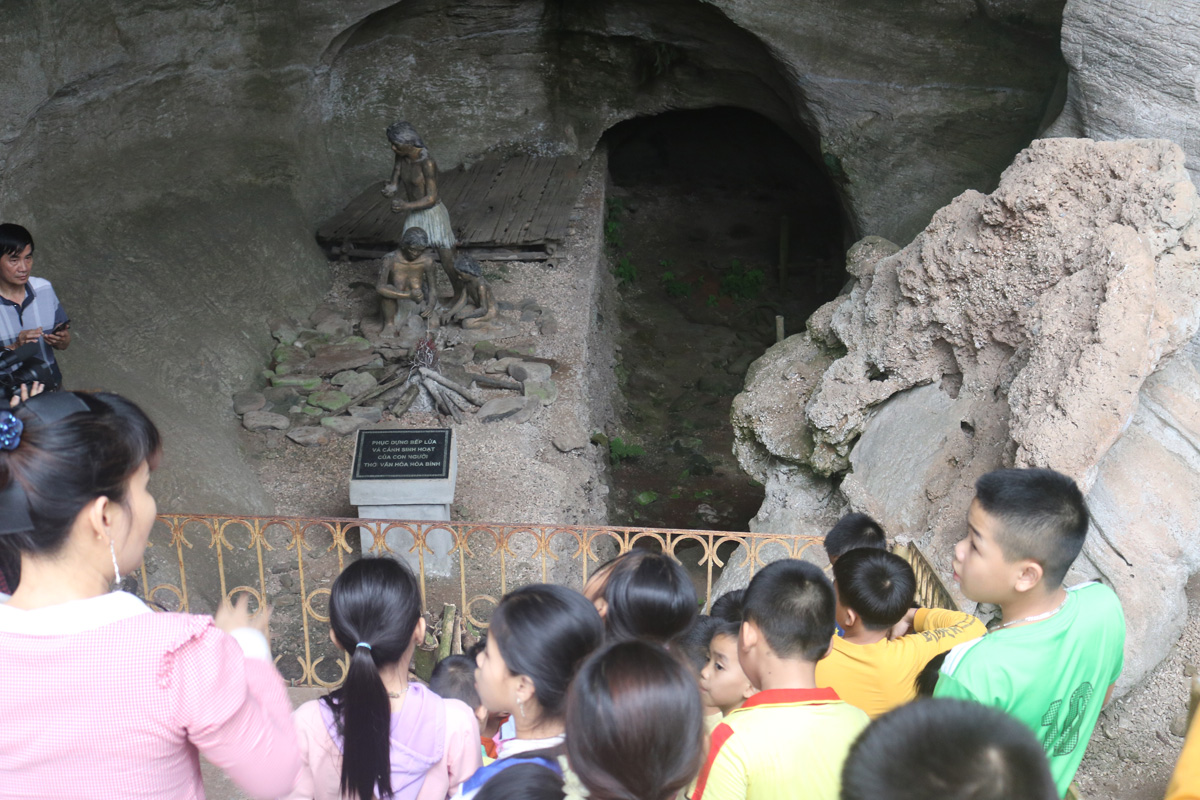
(HBO) –Trai cave is one of prehistoric caves related to the Hoa Binh Culture. The relic was ranked as a national historical site by the then Ministry of Culture and Sports (now the Ministry of Culture, Sports and Tourism) in 2001. Since its discovery, the cave has attracted a large number of Vietnamese and foreign scientists.
 Trai cave in Lac Son’s
Tan Lap commune has been preserved to serve tourism and studying activities on the
Hoa Binh Culture.
Trai cave in Lac Son’s
Tan Lap commune has been preserved to serve tourism and studying activities on the
Hoa Binh Culture.
Located on the east side of an independent mountain on the
bank of Lan stream, the 13m-deep cave has an arc-shape mouth of about 8m wide
and 10m high. The cave is filled with sunlight and clear air during daytime.
According to Nguyen Thi Thu Hien from the Hoa Binh museum,
the cave houses traces of the Hoa Binh Culture, the earliest of its type in the
Red River basin. Since its discovery in 1975, various research and excavations have
been conducted here, which unearthed over 5,000 artifacts. Most of the artifacts
are shells of stream snails, tools and pieces of pottery, and rice, among
others, which are the clearest evidence of a primitive wet rice farming in the
Hoa Binh Culture.
In 2008, preservation work was conducted in the relic to
serve both tourism and research purpose. In the coming time, together with a project on building an eco-urban,
resort, and high-end entertainment complex in Tan Lap’s Quy Hoa commune, the
cave will be further renovated to become an attractive tourist destination.
Meanwhile, locals will be trained to turn local specialties into tourism
products./.
With an increasingly vibrant and widespread emulation movement aimed at building cultured residential areas and cultured families, Yen Thuy District has been making steady progress toward improving both the material and spiritual well-being of its people, while fostering a civilized, prosperous, beautiful, and progressive community.
Once lacking recreational spaces and community facilities, Residential Group 2 in Quynh Lam Ward (Hoa Binh City) has recently received attention for the construction of a new, spacious, and fully equipped cultural house. The project followed the model of state support combined with public contributions in both labor and funding.
The "All people unite to build cultural life" movement, which has been effectively integrated with Kim Boi district’s socio-economic development goals, is fostering a lively spirit of emulation across local residential areas, hamlets, villages, public agencies, and enterprises. In addition, through the initiative, traditional cultural values are being preserved and promoted, while community solidarity and mutual support in poverty reduction and economic development are being strengthened.
A working delegation of the Hoa Binh provincial People’s Committee led by its Permanent Vice Chairman Nguyen Van Toan on June 11 inspected the progress of a project to build the Mo Muong Cultural Heritage Conservation Space linked to tourism services in Hop Phong commune, Cao Phong district.
Born and growing in the heroic land of Muong Dong, Dinh Thi Kieu Dung, a resident in Bo town of Kim Boi district, in her childhood was nurtured by the sweet lullabies of her grandmother and mother. These melodies deeply imprinted on her soul, becoming an inseparable part of her love for her ethnic group's culture. For over 20 years, this love for her hometown has driven Dung to research, collect, and pass down the cultural values of the Muong people to future generations.
In the final days of May, the Ethnic Art Troupe of Hoa Binh Province organized performances to serve the people in remote, mountainous, and particularly disadvantaged areas within the province. These were not just ordinary artistic shows, but they were the meaningful journeys aimed at spreading cultural values, enhancing the spiritual life of the people and contributing to the preservation of ethnic minority cultural identities.



 Trai cave in Lac Son’s
Tan Lap commune has been preserved to serve tourism and studying activities on the
Hoa Binh Culture.
Trai cave in Lac Son’s
Tan Lap commune has been preserved to serve tourism and studying activities on the
Hoa Binh Culture.